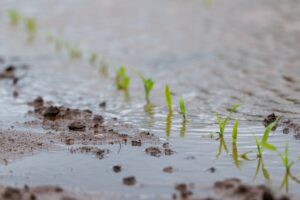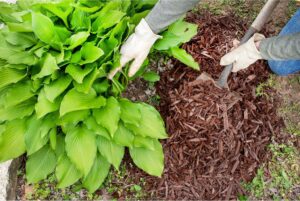Kathy Berryhill
Creek County Master Gardener
Many people have an ongoing love affair with their lush green lawns. Our stands of Bermuda, Fescue, and other turf grasses can be a great source of pride. Much time and effort is spent during warm weather to fertilize, water, mow, and admire our lawns. Recently, a late summer pest has turned some lawns into a complete fright overnight! What once was green and beautiful turns completely brown and dead in a few days.
The Armyworm may be the source of the problem. This pest migrates into our area from the gulf coast states and this year’s population is the highest it has been in the last 20 years. An Armyworm feeds on everything in its path and then moves onto a patch of turf. Feeding above ground on grass leaf blades, they have a particular fondness for destroying fescues. They will eat warm-season grasses like Bermuda, but won’t destroy them if kept well-watered.
Armyworms overwinter in warmer areas as pupae then emerge as adult moths in the spring. The moth mates and then lays massive amounts of eggs on host plants, mostly grasses. Once the larvae hatch, they feed for about 4 weeks. The greatest amount of plant damage occurs as appetites increase during the last 10 days of this period. As they pupate in cells in the soil, the cycle repeats. There are 4 generations per year in Oklahoma. The 1st generation in May and the 4th generation in late summer inflict the most damage to plants.
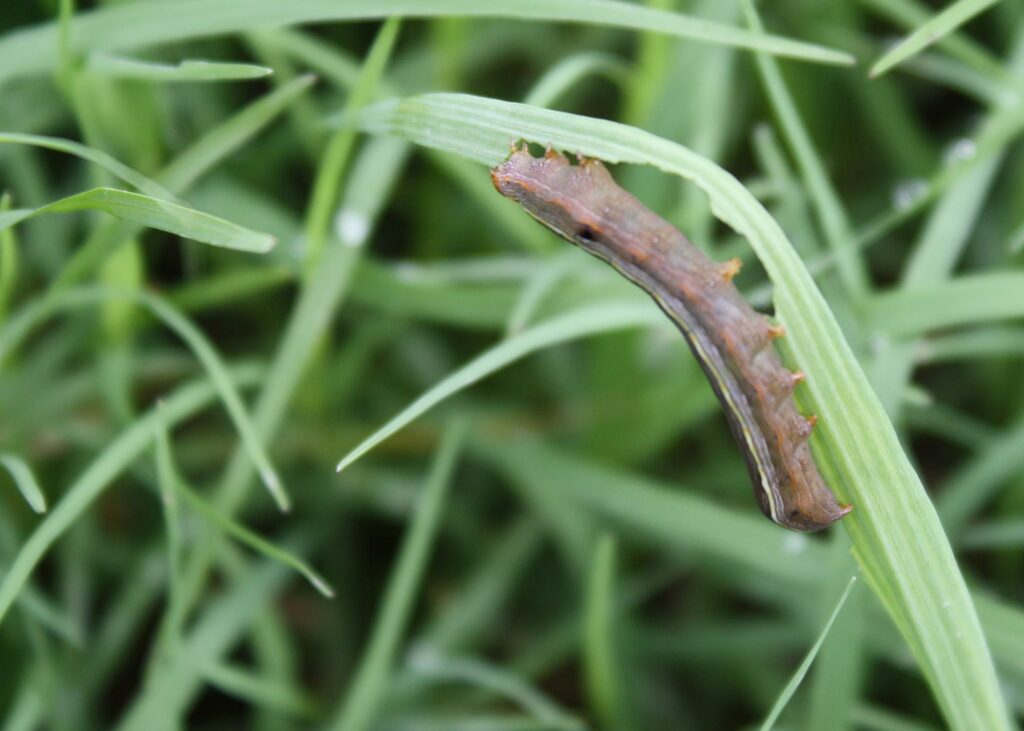
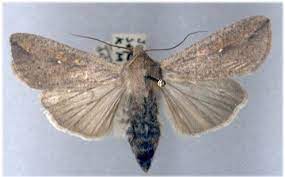
The mature size of the Armyworm is 1½- 2” long. Worms are an “army green” color with a series of green, yellow, red, or brown stripes running down their sides and back. Armyworms are appearing earlier than usual this year and can be noticed on sidewalks, plants, and actually crawling up the stems of grass. The adult moth of the species is usually gray and brown with triangular white spots at the tip and center of the upper wing. The hind wing is an iridescent silver-white with a narrow dark border. Adults are nocturnal, and are most active during warm, humid evenings.
To determine if you have an infestation in your grass, a simple “disclosing solution” can be used. Add a tablespoon of a lemon-scented dish soap to a gallon of water and then pour this on the grass. After 10 minutes, check and see if the worms have been flushed to the surface. If there are 2-3 small worms per square foot then treatment is recommended.
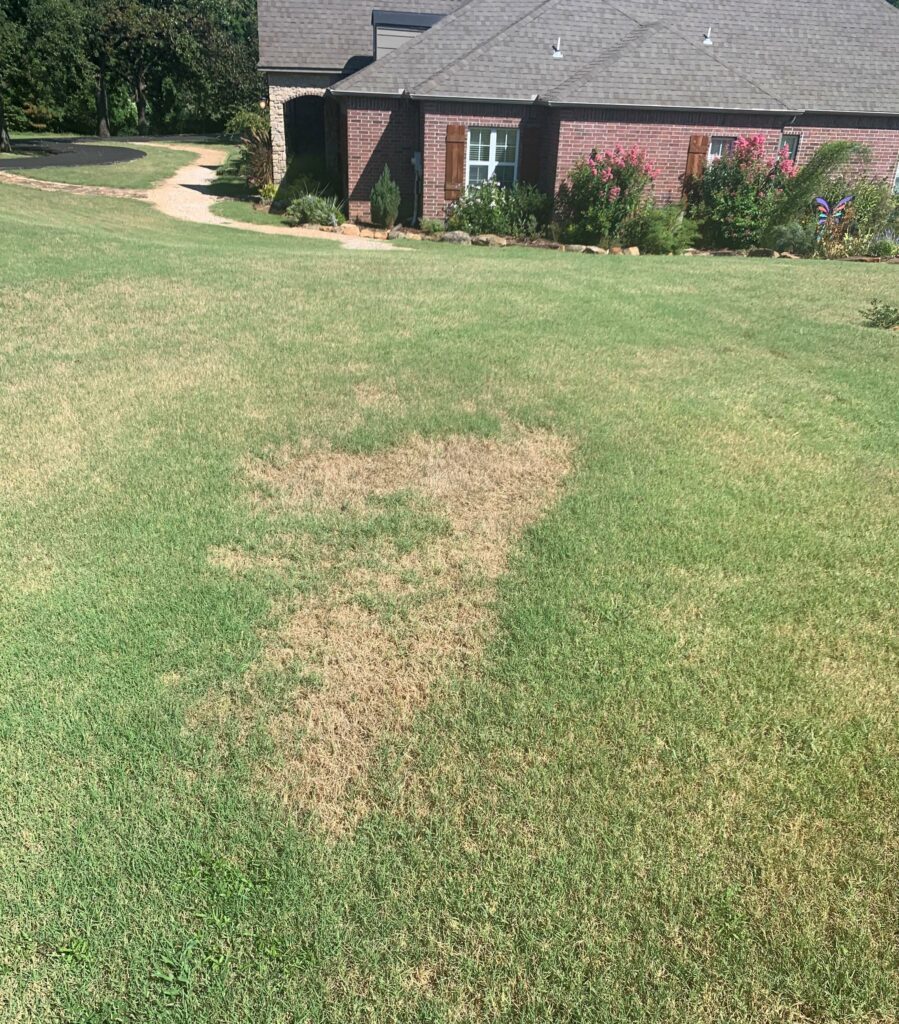
Using a broad-spectrum insecticide can target the armyworm, but will also have a negative impact on many other species or insects. Consider an organic approach such as Bt (Bacillus thuringiensis) or Neem Oil. Bt is a naturally occurring microbe that produces toxins that kill immature insects (larvae). Unlike indiscriminate products like Seven dust, Bt will target the small armyworm larvae without impacting pollinators. Repeat applications are encouraged as the Bt has a short life after exposure to the elements. As always, when using any product, always follow the package directions.


